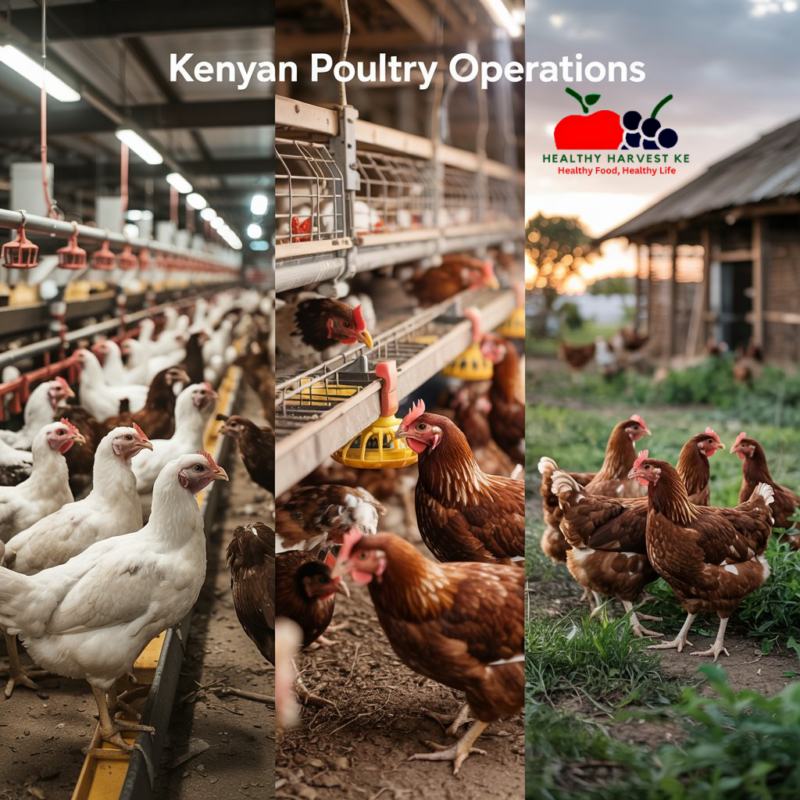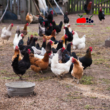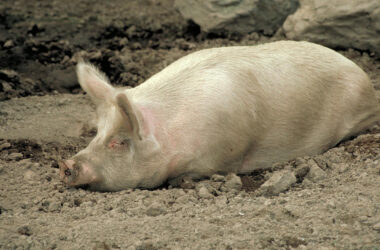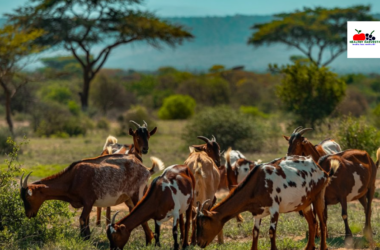Want to cash in on Kenya’s booming poultry industry? You’re making a smart move. Chicken farming has become one of the country’s fastest-growing agricultural sectors, and for good reason. With rising demand for poultry products, changing food preferences, and a growing middle class, there’s never been a better time to get your hands dirty in this lucrative business.
Whether you’re eyeing a small backyard operation or dreaming of a commercial empire, this guide breaks down everything you need to know about how to start chicken farming in Kenya. Let’s turn those chicken dreams into reality.
Why Chicken Farming in Kenya Makes Sense
Before diving into the nitty-gritty, let’s talk about why chicken farming is such a hot ticket in Kenya right now.
The poultry sector in Kenya has transformed into a vibrant agricultural powerhouse that’s creating serious economic benefits across the entire value chain. With urbanization pushing up demand for eggs and meat, and Kenya’s middle class expanding rapidly, farmers at all levels are finding profitable opportunities.
What makes chicken farming particularly attractive is the relatively low startup capital compared to other livestock ventures. This accessibility means entrepreneurs with varying financial capabilities can jump in and start seeing returns.
Plus, you’re not just making money—you’re contributing to Kenya’s food security by providing affordable protein sources and creating jobs throughout the production-to-marketing pipeline.
Types of Chicken Farming: Pick Your Path
Before breaking ground on your chicken empire, you need to decide which type of farming system fits your goals and resources. Kenya offers three main approaches:
Broiler Farming
If quick turnaround is your game, broiler farming focuses on meat production with chickens reaching market readiness in just 6-8 weeks. This system requires intensive management with specialized feeding regimens and controlled environments to maximize growth rates and meat quality.
Layer Farming
More interested in the egg business? Layer farming centers on egg production, with hens starting to lay between 18-22 weeks of age and continuing for approximately 72 weeks. Your focus here will be on nutrition and housing that optimizes egg production throughout the laying cycle.
Indigenous Chicken Farming (Kienyeji)
For those looking to tap into traditional markets, indigenous chicken farming is gaining serious traction. These native breeds are hardy and disease-resistant, thriving in less intensive systems with more traditional management approaches.
Popular indigenous breeds include Kari improved kienyeji, Kuroiler, Rainbow Rooster, and Kenbro chickens, each with specific advantages in productivity and market appeal. The growing consumer preference for kienyeji products, seen as healthier and more flavorful, has created expanding market opportunities for farmers taking this route.
Creating Your Chicken Farming Business Plan
Don’t just wing it. A solid business plan is your roadmap to poultry success.
Start by conducting a thorough SWOT analysis (Strengths, Weaknesses, Opportunities, and Threats) specific to poultry farming in Kenya. This helps you identify your internal capabilities and limitations while recognizing external factors that might impact your success.
Your business plan should include:
- Clear objectives and measurable goals
- Detailed operational strategies
- Financial projections including costs, revenue streams, and profit margins
- Return on investment timelines
- Resource requirements (land, infrastructure, equipment, staff)
This document isn’t just for your reference—it’s crucial when seeking financial support from lenders or potential investors. It shows you’ve done your homework and understand what you’re getting into.
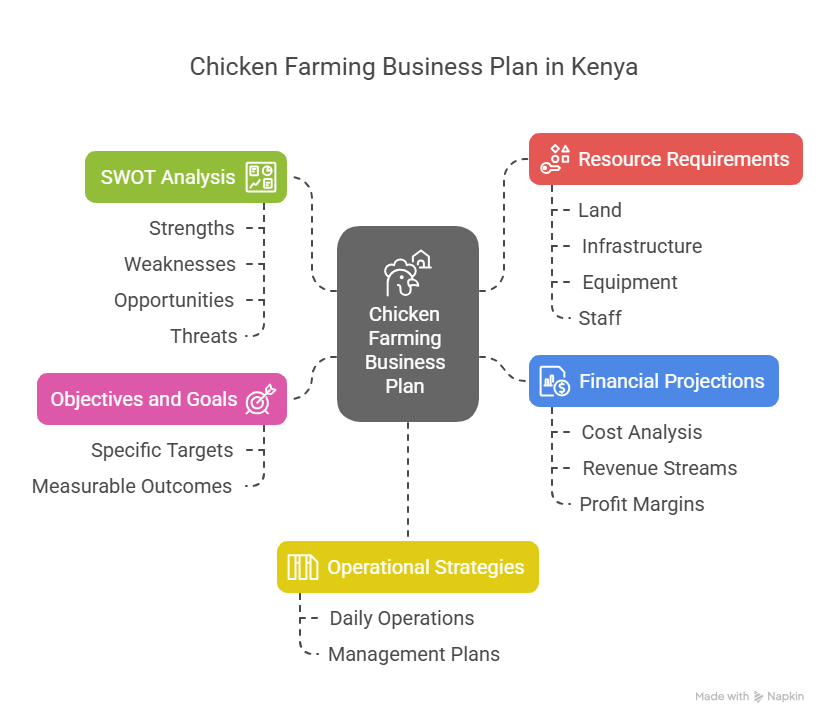
Market Research: Know Before You Grow
Before buying your first chick, invest time in understanding the market landscape. Analyze current market conditions, including supply-demand dynamics, price trends, and consumer preferences in your target region.
Look at the competitive landscape to identify market gaps and opportunities for differentiation. Examine distribution channels, evaluating their accessibility, cost implications, and alignment with your planned operation’s scale.
Most importantly, identify and profile your target customers. Whether you’re selling to households, restaurants, hotels, supermarkets, or institutional buyers, each segment has specific requirements regarding product attributes, delivery schedules, packaging preferences, and pricing expectations.
Pro tip: Establish relationships with potential buyers before you even start production. This provides valuable insights into specific market requirements while potentially securing preliminary purchase agreements to reduce initial market uncertainties.
Financial Planning: Crunch the Numbers
Let’s talk money. Your initial capital requirements will vary significantly based on your farming system, scale of operations, and level of technological sophistication.
Develop a detailed start-up budget covering:
- Land acquisition or leasing costs
- Infrastructure development
- Equipment purchases
- Initial stock acquisition
- Feed reserves
- Veterinary supplies
- Operating capital to sustain the business until it generates positive cash flow
Your financial plan should include comprehensive revenue projections based on realistic production volumes, market prices, and seasonal variations. Similarly, detailed cost estimates should account for recurring expenses such as feed, labor, utilities, medications, transport, and marketing.
These projections enable you to calculate critical financial indicators including gross margins, break-even points, payback periods, and return on investment ratios. A well-structured financial plan also helps identify potential cash flow challenges so you can implement appropriate financing strategies.
Land Requirements: Location Matters
When selecting land for your chicken farm, size is just one consideration. Your land requirements vary based on your intended scale:
- Large-scale commercial farms typically need at least one acre
- Small-scale or backyard operations can function effectively with considerably less space
Beyond size, prioritize these factors:
- Accessibility: Good road access to markets
- Utilities: Reliable water supply and electricity
- Environmental factors: Minimal hazards, good drainage
- Legal status: Clear ownership documents and appropriate zoning
- Expansion potential: Room to grow as your business develops
The optimal location balances these factors with your budget constraints while positioning you for efficient operations and market access.
Housing Infrastructure: Build for Success
Your chicken housing can make or break your farming venture. Modern chicken houses should incorporate:
- Proper ventilation systems to maintain air quality
- Appropriate lighting systems (especially important for layer productivity)
- Temperature regulation capabilities
- Effective predator protection
- Waste management systems
For layer operations, include appropriate nesting areas. Broiler houses need adequate floor space to accommodate growing birds. If you’re raising indigenous chickens, your design might be more traditional with sufficient outdoor access, though protection from predators and weather remains essential.
Your housing configuration should align with Kenya’s climatic conditions, considering regional variations in temperature, humidity, and seasonal patterns that might influence flock management practices.
Essential Equipment and Supplies
Beyond the coop, you’ll need specialized equipment to run an efficient operation. Your shopping list should include:
- Brooders: Heating systems essential for chick rearing during their first weeks
- Feeding equipment: From simple manual systems to automated mechanisms
- Watering systems: Critical for consistent access to clean water
- Egg collection trays: For layer operations
- Storage containers: For collected eggs
- Weighing scales: To monitor growth and manage feed rations
- Spray equipment: For housing sanitation and disease prevention
- Waste management systems: To maintain hygiene standards
- Lighting systems: Particularly important for layer productivity
- Egg incubators and hatchers: If you’re producing your own replacement stock
Regular supplies include quality feed ingredients, medications, vaccines, bedding materials, cleaning supplies, and record-keeping materials. Select equipment that balances durability, cost-effectiveness, maintenance requirements, and compatibility with your specific farming system.
Choosing the Right Chicken Breeds
Selecting appropriate chicken breeds is a critical decision that significantly impacts your farm’s productivity and profitability. Your choice should align with your farming purpose, market preferences, available resources, and management capabilities.
Commercial Broiler Breeds
For meat production, fast-growing hybrid breeds dominate the industry:
- Cobb: Excellent feed conversion and rapid weight gain
- Ross: High meat yield and efficient growth
Commercial Layer Breeds
For egg production, specialized hybrids include:
- Isa Brown: High egg production with good feed efficiency
- Lohmann: Consistent egg size and quality
- Hyline: Excellent productivity and longevity
Indigenous Breeds
For kienyeji farming, popular options include:
- Kari improved kienyeji: Enhanced productivity while maintaining hardiness
- Kuroiler: Dual-purpose breed with good growth and egg production
- Rainbow Rooster: Adaptable to free-range conditions
- Kenbro: Fast-growing with good meat quality
When sourcing your birds, prioritize reputable hatcheries or suppliers with documented health status and genetic quality. Plan transportation carefully to minimize stress, ideally moving chicks within six hours after hatching to allow for effective adaptation to their new environment.
Regulatory Requirements: Getting Legal
Chicken farming operations in Kenya must comply with various regulatory requirements established by national and county authorities. The Kenya Bureau of Standards (KEBS) has implemented specific guidelines for poultry farming practices to ensure consumer protection.
Your regulatory checklist should include:
- Business registration
- Public health permits
- Environmental impact assessments (for larger operations)
- Specific permits related to poultry farming activities
Depending on your operation’s scale and activities, you might need additional authorizations for processing facilities, transportation operations, or waste management systems.
Stay current on evolving regulatory requirements by maintaining regular communication with relevant governmental agencies and considering membership in industry associations that monitor regulatory developments.
Implement record-keeping systems that document your compliance activities—this facilitates regulatory inspections and demonstrates your commitment to legal and ethical business practices.
Feeding and Nutrition Management
Feed represents your largest operational cost, making effective feed management essential for profitability. Different production stages require specific nutritional formulations:
Commercial Operations Feed Schedule:
- Broilers: Starter, grower, and finisher formulations
- Layers: Starter, grower, developer, and layer feeds
For indigenous chicken operations, you can often reduce costs by supplementing commercial feeds with locally available ingredients. Creating balanced feed mixtures for kienyeji chickens typically involves combinations of whole maize, soybean meal, fish meal (omena), and maize bran in appropriate proportions.
Regardless of your production system, providing clean, fresh water at all times is crucial—water restriction rapidly impacts feed consumption and production performance.
Protect your feed investment with proper storage facilities that guard against moisture, pests, and contaminants. Consider implementing strategic feeding programs like phase feeding, split feeding, or choice feeding to optimize feed utilization and production economics.
Health Management and Disease Prevention
Disease outbreaks can devastate your operation if not properly addressed. Implement a comprehensive biosecurity program as your first line of defense:
- Control access to production areas
- Install footbaths at entry points
- Use dedicated farm clothing and footwear
- Establish visitor protocols
- Perform thorough cleaning and disinfection between production cycles
Develop a vaccination program tailored to regional disease challenges, protecting against common poultry diseases like Newcastle disease, infectious bronchitis, Gumboro disease, and fowl typhoid.
Monitor flock health through regular observation and, where appropriate, laboratory diagnostics for early disease detection. Establish relationships with qualified veterinarians or poultry health specialists who can provide support when health challenges arise.
Maintaining appropriate stocking densities, ensuring good ventilation, implementing effective parasite control, and providing nutritionally balanced diets all contribute to natural disease resistance and overall flock health.
Record Keeping: Track Your Success
Comprehensive record-keeping provides essential data for evaluating performance and making informed management decisions. Track:
- Production parameters (growth rates, egg production, mortality)
- Input utilization (feed consumption, medication use)
- Financial transactions (expenses, sales revenue)
- Health interventions (vaccinations, treatments)
This information enables calculation of key performance indicators like feed conversion ratios, cost per unit produced, mortality percentages, and return on investment metrics.
Regular analysis of these records allows you to benchmark your operation’s performance against industry standards and identify trends that require management adjustments. Consider digital record-keeping tools, including specialized poultry management software and mobile applications, to facilitate sophisticated data analysis.
Marketing Your Poultry Products
Developing effective marketing strategies is crucial for sustainable success. Consider these approaches:
Product Differentiation
Distinguish your offerings by emphasizing:
- Production methods (free-range, organic, antibiotic-free)
- Specific chicken breeds with unique characteristics
- Product quality attributes (freshness, taste, nutritional value)
Value Addition
Enhance marketability and price premiums through:
- Egg grading and specialized packaging
- Processing services such as portioning or marinating
- Ready-to-cook products for convenience-oriented consumers
Distribution Channels
Choose channels that align with your operation’s scale:
- Direct marketing: Farm-gate sales, farmers’ markets, home delivery services
- Intermediaries: Retailers, restaurants, institutions, wholesalers
Build strong customer relationships through regular communication, consistent product quality, reliability in meeting delivery commitments, and responsiveness to feedback.
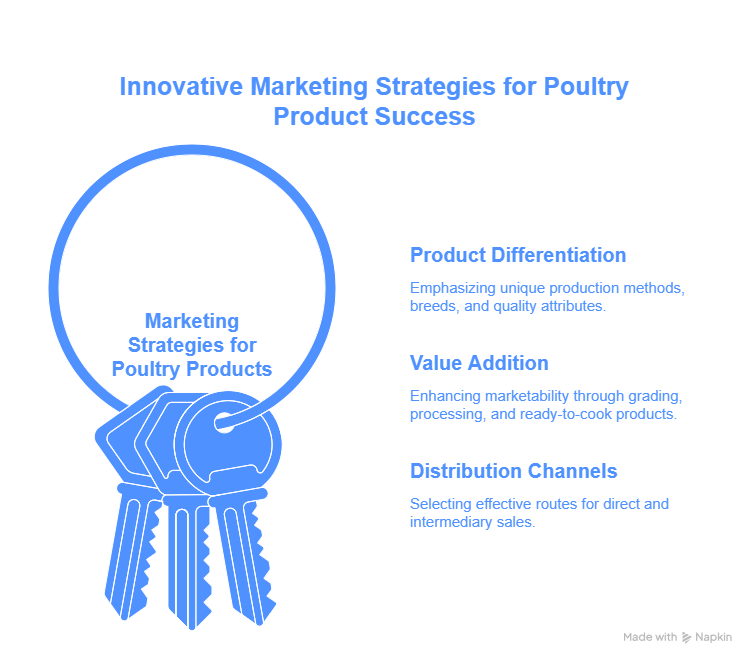
Leveraging Technology for Success
The digital landscape offers expanding opportunities to market your products and build brand awareness:
- Develop an online presence through websites, social media platforms, or marketplace listings
- Use content marketing to showcase production practices and share customer testimonials
- Implement digital tools for customer relationship management
- Consider e-commerce capabilities to facilitate direct sales
While implementing these digital strategies requires some technical knowledge, they offer significant marketing advantages, particularly for reaching younger, technology-oriented consumer segments.
Common Challenges and Solutions
Despite its potential profitability, chicken farming presents several challenges that require proactive management:
Disease Outbreaks
- Solution: Implement strict biosecurity protocols, vaccination programs, and regular health monitoring
High Feed Costs
- Solution: Consider on-farm feed production, ingredient stockpiling during low-price periods, or alternative ingredient options
Market Fluctuations
- Solution: Diversify market segments, offer different product types, or implement staggered production schedules
Environmental Control
- Solution: Install backup systems for critical functions, particularly ventilation and watering systems during power interruptions
Predation Threats
- Solution: Implement appropriate protection measures, especially for free-range or semi-intensive systems
Maintain adequate cash reserves or access to emergency credit lines to ensure operational continuity during challenging periods.
Conclusion: Your Path to Poultry Success
Starting a successful chicken farming venture in Kenya requires thorough planning, appropriate infrastructure, sound management practices, and effective marketing strategies. With the right approach, both small-scale and commercial operations can thrive in this dynamic sector.
Begin with clear business objectives, detailed market analysis, and realistic financial projections. Implement appropriate housing systems, select suitable chicken breeds, maintain effective health management protocols, and optimize nutrition while controlling costs.
While challenges exist, implementing appropriate risk management strategies can significantly enhance your business resilience and long-term sustainability. With proper planning and diligent management, chicken farming in Kenya offers viable entrepreneurial opportunities that contribute to personal livelihoods, community employment, and national food security.
Ready to start your chicken farming journey? The perfect time is now!




